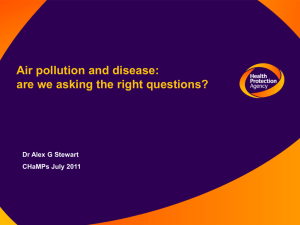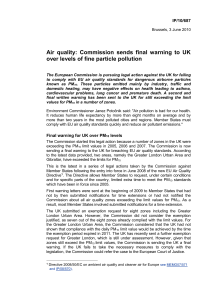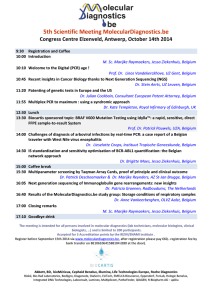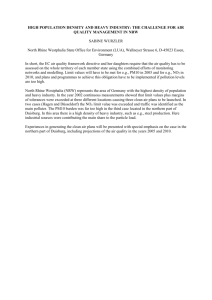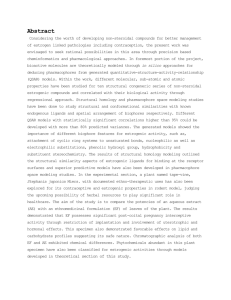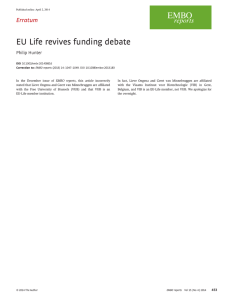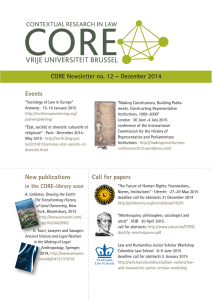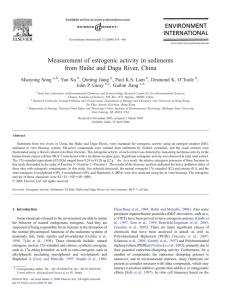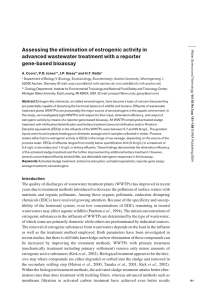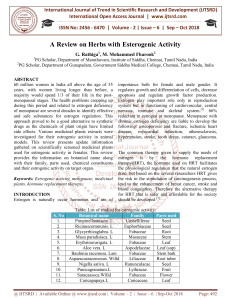title of abstract - Vrije Universiteit Brussel
advertisement
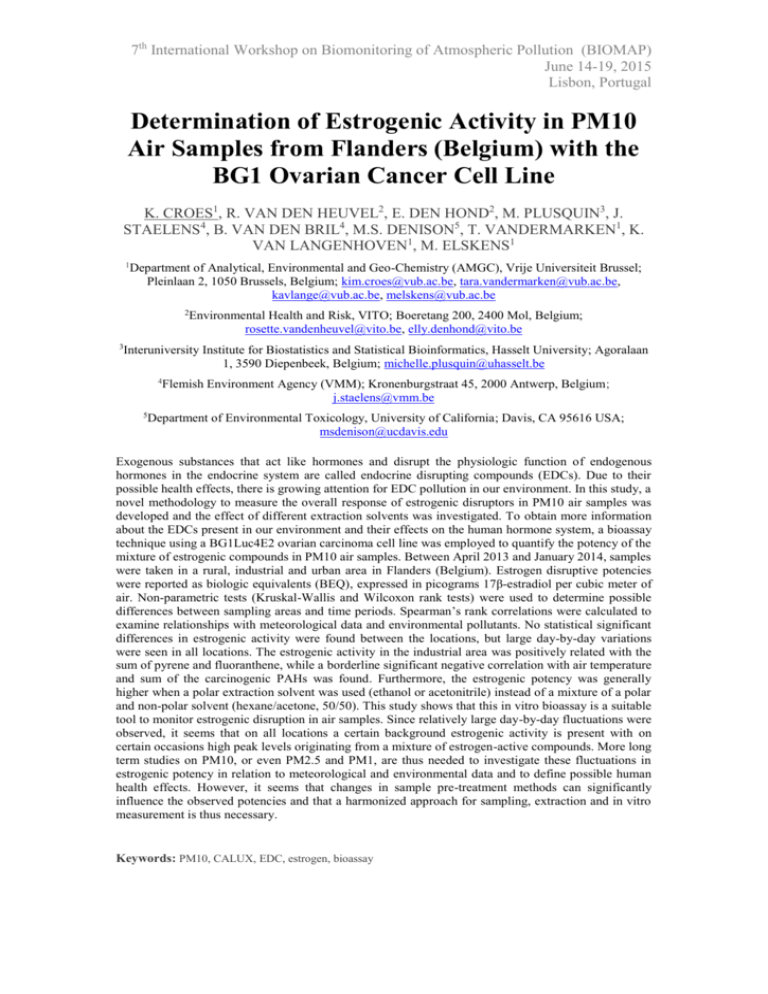
7th International Workshop on Biomonitoring of Atmospheric Pollution (BIOMAP) June 14-19, 2015 Lisbon, Portugal Determination of Estrogenic Activity in PM10 Air Samples from Flanders (Belgium) with the BG1 Ovarian Cancer Cell Line K. CROES1, R. VAN DEN HEUVEL2, E. DEN HOND2, M. PLUSQUIN3, J. STAELENS4, B. VAN DEN BRIL4, M.S. DENISON5, T. VANDERMARKEN1, K. VAN LANGENHOVEN1, M. ELSKENS1 1 Department of Analytical, Environmental and Geo-Chemistry (AMGC), Vrije Universiteit Brussel; Pleinlaan 2, 1050 Brussels, Belgium; kim.croes@vub.ac.be, tara.vandermarken@vub.ac.be, kavlange@vub.ac.be, melskens@vub.ac.be 2 Environmental Health and Risk, VITO; Boeretang 200, 2400 Mol, Belgium; rosette.vandenheuvel@vito.be, elly.denhond@vito.be 3 Interuniversity Institute for Biostatistics and Statistical Bioinformatics, Hasselt University; Agoralaan 1, 3590 Diepenbeek, Belgium; michelle.plusquin@uhasselt.be 4 Flemish Environment Agency (VMM); Kronenburgstraat 45, 2000 Antwerp, Belgium; j.staelens@vmm.be 5 Department of Environmental Toxicology, University of California; Davis, CA 95616 USA; msdenison@ucdavis.edu Exogenous substances that act like hormones and disrupt the physiologic function of endogenous hormones in the endocrine system are called endocrine disrupting compounds (EDCs). Due to their possible health effects, there is growing attention for EDC pollution in our environment. In this study, a novel methodology to measure the overall response of estrogenic disruptors in PM10 air samples was developed and the effect of different extraction solvents was investigated. To obtain more information about the EDCs present in our environment and their effects on the human hormone system, a bioassay technique using a BG1Luc4E2 ovarian carcinoma cell line was employed to quantify the potency of the mixture of estrogenic compounds in PM10 air samples. Between April 2013 and January 2014, samples were taken in a rural, industrial and urban area in Flanders (Belgium). Estrogen disruptive potencies were reported as biologic equivalents (BEQ), expressed in picograms 17β-estradiol per cubic meter of air. Non-parametric tests (Kruskal-Wallis and Wilcoxon rank tests) were used to determine possible differences between sampling areas and time periods. Spearman’s rank correlations were calculated to examine relationships with meteorological data and environmental pollutants. No statistical significant differences in estrogenic activity were found between the locations, but large day-by-day variations were seen in all locations. The estrogenic activity in the industrial area was positively related with the sum of pyrene and fluoranthene, while a borderline significant negative correlation with air temperature and sum of the carcinogenic PAHs was found. Furthermore, the estrogenic potency was generally higher when a polar extraction solvent was used (ethanol or acetonitrile) instead of a mixture of a polar and non-polar solvent (hexane/acetone, 50/50). This study shows that this in vitro bioassay is a suitable tool to monitor estrogenic disruption in air samples. Since relatively large day-by-day fluctuations were observed, it seems that on all locations a certain background estrogenic activity is present with on certain occasions high peak levels originating from a mixture of estrogen-active compounds. More long term studies on PM10, or even PM2.5 and PM1, are thus needed to investigate these fluctuations in estrogenic potency in relation to meteorological and environmental data and to define possible human health effects. However, it seems that changes in sample pre-treatment methods can significantly influence the observed potencies and that a harmonized approach for sampling, extraction and in vitro measurement is thus necessary. Keywords: PM10, CALUX, EDC, estrogen, bioassay

